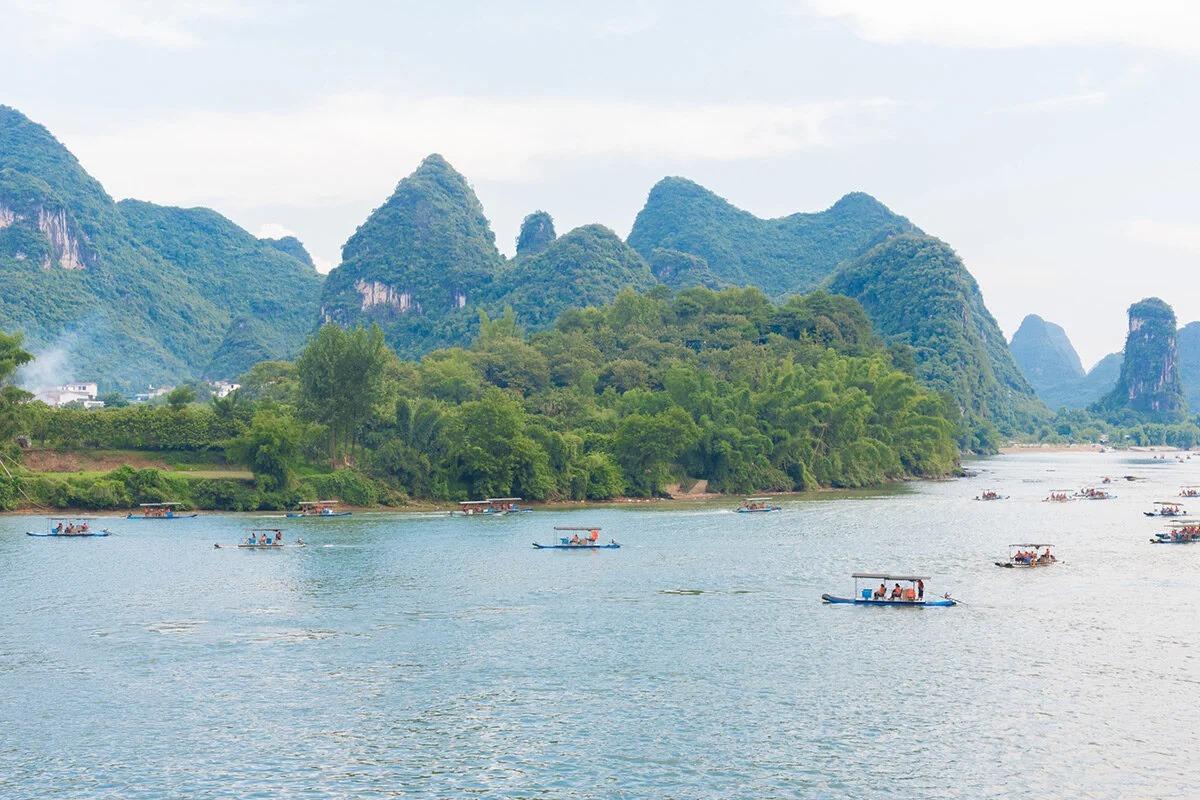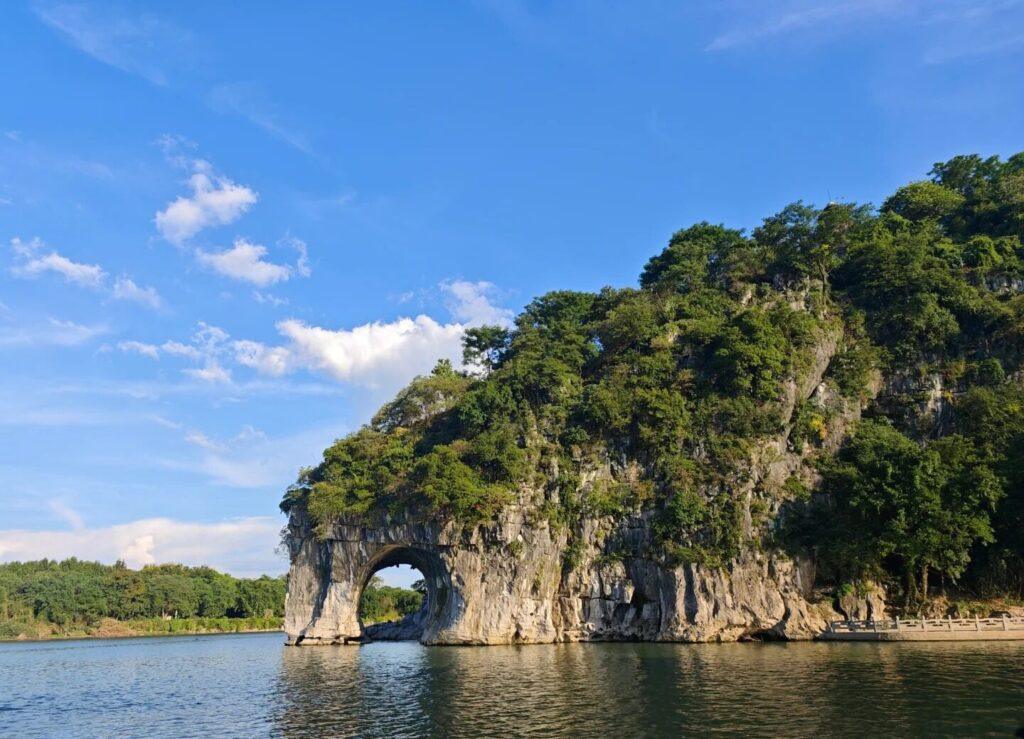Visiting Information
| Information | Details |
|---|---|
| Chinese Name | 漓江 (Líjiāng) |
| Location and Address | Guangxi Zhuang Autonomous Region, China (from Guilin to Yangshuo) |
| Opening Time/Hours | Open year-round; boat tours typically operate from 8:00 AM to 5:00 PM |
| Entrance Fee | Varies by tour type; approximately 250-400 CNY for a standard cruise |
| How to Get There | By Bus: Take bus 23 from Guilin to Zhujiang Pier By Taxi: Available from Guilin city center to various piers (No metro service available in Guilin) |
| Best Time for Visit | April to October for comfortable weather and scenic views |
| Contact Info | Guilin Tourism Bureau: +86 773 2823440 |
Overview
The Li River, or Lijiang, is a stunning 83-kilometer-long waterway flowing through the Guangxi Zhuang Autonomous Region in southern China. Known for its breathtaking karst landscape, serene waters, and mist-shrouded mountains, it is often described as one of the most beautiful rivers in the world. The section between Guilin and Yangshuo is particularly famous, offering visitors a scenic journey through a landscape that has inspired artists and poets for centuries.
Historical Background
The Li River has played a significant role in Chinese history and culture for thousands of years. It has been an important transportation route and a source of life for local communities since ancient times. The river’s unique landscape has been celebrated in Chinese art and literature dating back to the Tang Dynasty (618-907 AD). Throughout history, it has been a source of inspiration for countless painters, poets, and philosophers, cementing its place in Chinese cultural heritage.
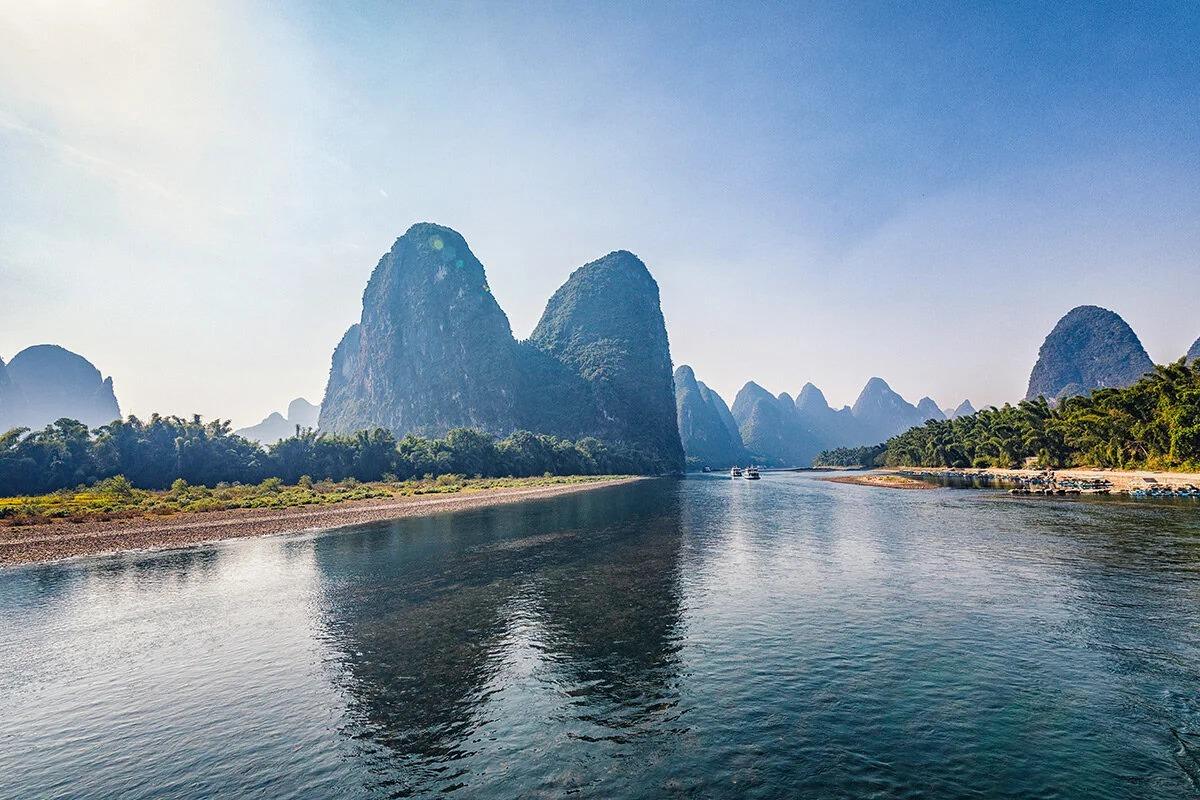
Architectural Features
- Ancient Fishing Villages: Along the banks of the Li River, visitors can observe traditional fishing villages that have remained largely unchanged for centuries. These villages, with their distinctive architecture and way of life, offer a glimpse into rural China’s past and present.
- Cormorant Fishermen Structures: While not strictly architectural, the bamboo rafts and unique fishing equipment used by cormorant fishermen are iconic features of the Li River. These traditional fishing methods have been practiced for over a thousand years and are now preserved mainly for cultural and tourism purposes.
- Yangshuo Bridge: This modern bridge spans the Li River in Yangshuo, offering a striking contrast to the natural landscape. Its design incorporates elements that complement the surrounding karst mountains, making it an architectural point of interest.
Cultural Importance
The Li River is deeply intertwined with the cultural identity of the Guangxi region. It has been a source of livelihood, inspiration, and spiritual significance for local communities, particularly the Zhuang ethnic group. The river’s landscape has been immortalized on the 20 Yuan banknote, underlining its national importance. Traditional practices like cormorant fishing, although now primarily maintained for tourism, reflect the long-standing relationship between the local people and the river. The Li River also plays a crucial role in local festivals and customs, such as the annual Guangxi Liu Sanjie Folk Song Fair.
Surrounding Attractions
- Elephant Trunk Hill: Located at the confluence of the Li River and the Peach Blossom River in Guilin, this hill is shaped like an elephant drinking from the river. It’s one of Guilin’s most iconic landmarks and offers beautiful views of the surrounding area.
- Reed Flute Cave: This natural limestone cave in Guilin is known for its stunning stalactites, stalagmites, and other rock formations. Illuminated by colorful lighting, it creates a magical underground world that has attracted visitors for over 1200 years.
- Yangshuo West Street: This bustling pedestrian street in Yangshuo is famous for its blend of Chinese and Western influences. Visitors can enjoy local cuisine, shop for souvenirs, and experience the vibrant nightlife of this picturesque town.
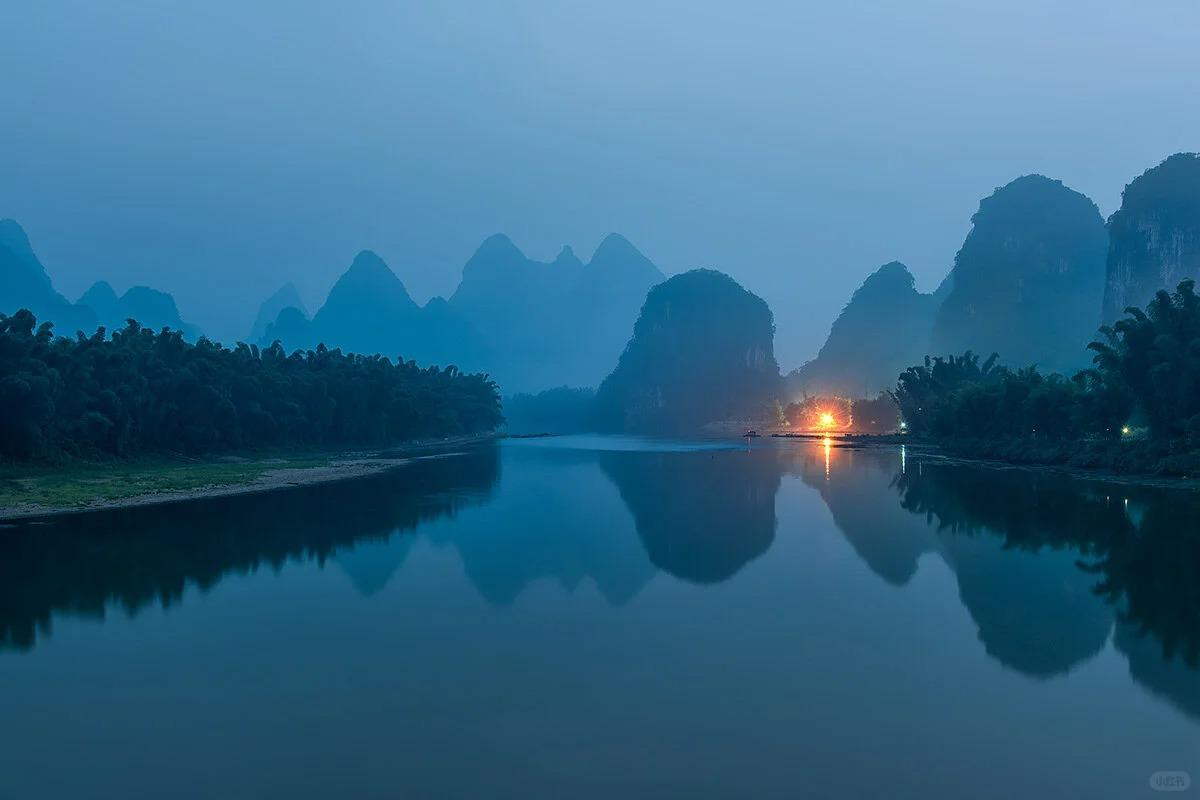
Photography Opportunities
- Xingping Fishing Village: This ancient town offers some of the most iconic views of the Li River. The bend in the river here, with karst mountains in the background, is the scene depicted on the 20 Yuan note and is a must-capture for photographers.
- Nine Horse Fresco Hill: This famous hill along the Li River is said to resemble nine horses when viewed from certain angles. The interplay of light and shadow on its rocky surface creates ever-changing scenes throughout the day, offering unique photographic opportunities.
- Cormorant Fishermen at Sunset: The silhouettes of traditional cormorant fishermen on their bamboo rafts against the backdrop of a sunset over the Li River create stunning photographic compositions, capturing the essence of this culturally rich region.
Modern Importance
- Tourism Economy: The Li River is a crucial driver of the local tourism industry, attracting millions of domestic and international visitors annually. This has significantly contributed to the economic development of Guilin, Yangshuo, and surrounding areas.
- Environmental Conservation: As a key natural asset, the Li River has become a focus of environmental protection efforts. The Chinese government has implemented various measures to preserve the river’s ecology and maintain its scenic beauty, serving as a model for balancing tourism development with environmental conservation.
- Cultural Preservation: The river plays a vital role in preserving and showcasing the cultural heritage of the Guangxi region. Efforts to maintain traditional practices like cormorant fishing, even if primarily for tourism, help keep ancient customs alive and educate visitors about local history and culture.
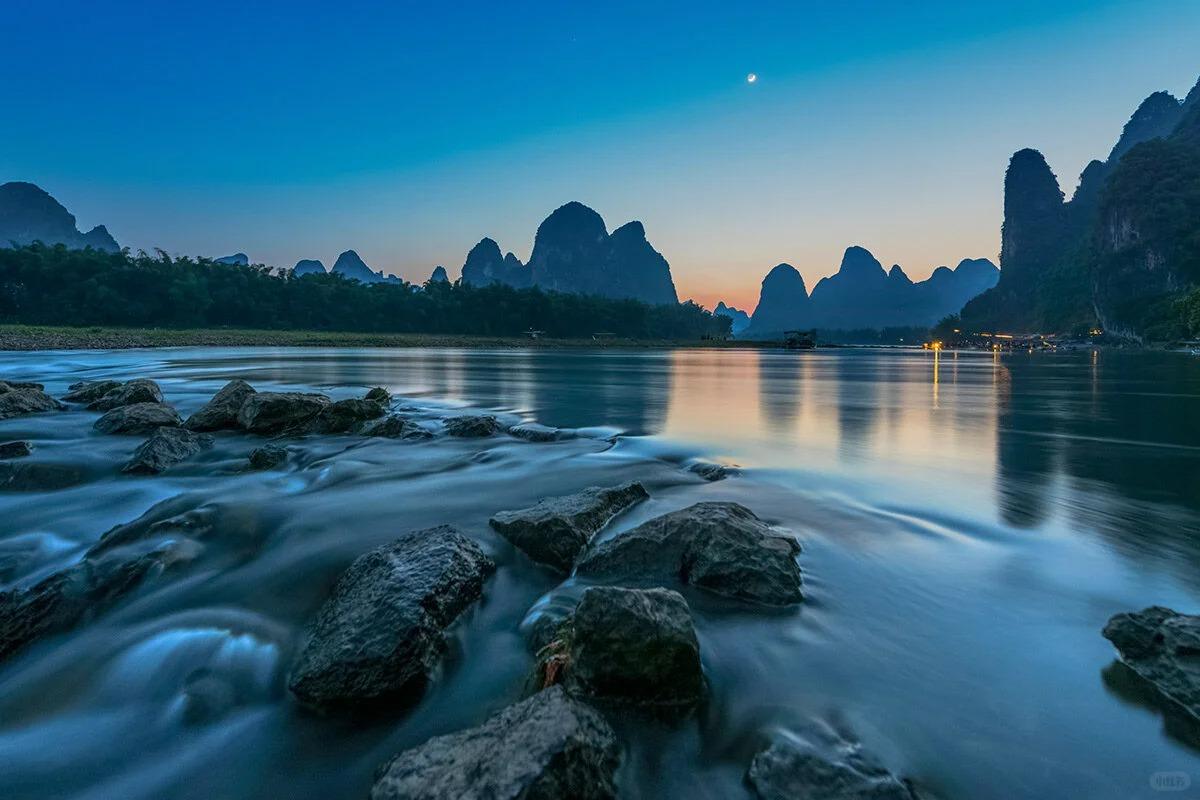
FAQ
- What is Li River famous for?
Li River is famous for its breathtaking karst landscape, clear waters, and mist-shrouded mountains. It’s renowned for being one of the most beautiful and scenic rivers in China and is often featured in traditional Chinese paintings and poetry. - What’s inside Li River?
Li River offers a scenic journey through a landscape of limestone karst hills, clear waters, and picturesque villages. Visitors can see unique rock formations, traditional fishing villages, and occasionally spot cormorant fishermen demonstrating ancient fishing techniques. - Is Li River free?
While viewing Li River from certain points on land may be free, most visitors experience the river through boat cruises or tours, which have associated costs. Prices vary depending on the type and duration of the tour. - Is Li River worth visiting?
Yes, Li River is absolutely worth visiting. It’s considered one of China’s must-see attractions due to its stunning natural beauty, cultural significance, and unique landscape that can’t be found elsewhere. - What to do in Li River?
Visitors can take boat cruises to admire the scenery, photograph the landscape, visit nearby attractions like Elephant Trunk Hill or Reed Flute Cave, explore traditional villages, or enjoy outdoor activities like hiking and cycling in the surrounding areas. - How do I get to Li River in the local city?
To access Li River from Guilin city, you can take bus 23 from the city center to Zhujiang Pier, or take a taxi to various piers where boat tours depart. Many hotels also offer shuttle services to river cruise departure points. - How to visit Li River?
The most popular way to visit Li River is by taking a boat cruise from Guilin to Yangshuo, which typically lasts 4-5 hours. You can book these tours through local travel agencies, hotels, or online. For a more intimate experience, consider smaller bamboo raft tours or viewing the river from scenic spots along its banks. It’s best to visit during the warmer months (April to October) for the most comfortable weather and best views.



